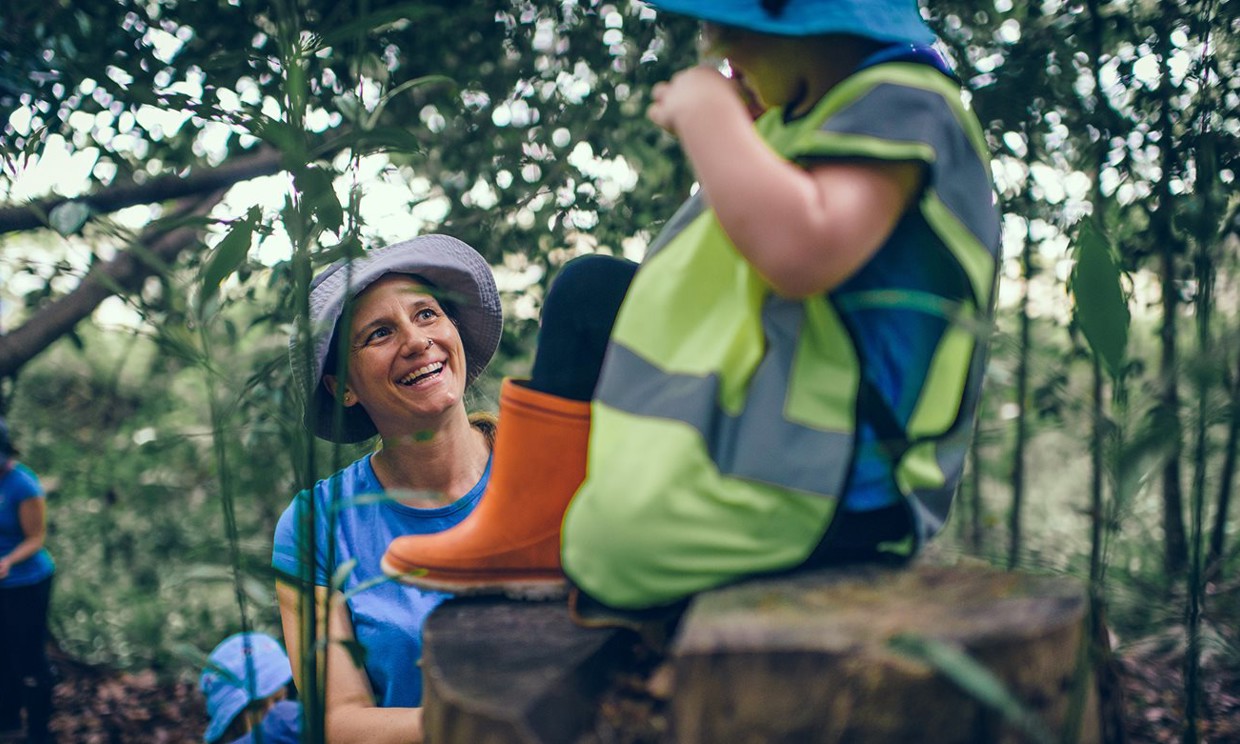Author: Melissa Griffiths, Centre Director, Goodstart Blakeview
There’s a growing discussion among parents and educators about children and ‘risky play’ – that is, play where children could potentially hurt themselves.
As educators we used to link the term risky play with unsafe play, and our instincts told us that we needed to shadow the children in our care and make the outdoor environments of our centres flat, soft and safe.
This view was shared throughout child care centres and also in schools, playgrounds and public spaces the world over. As a generation of parents, care-givers and educators, we’ve become highly risk averse with our children.
Child safety is something we never take lightly at Goodstart Blakeview, but in addition to ensuring children are safe we also have a responsibility to help them grow and develop into competent children and adults who are capable of assessing risks and making smart decisions.
We know that in adult life there’s a risk of failure or injury in many decisions we make each day, but because we make so many of these decisions it comes as second nature. But can children develop the skills we take for granted as adults if they are shielded from risk at every turn?
The fact is, taking risks and learning from the consequences, good or bad, are a valuable part of learning in early childhood. And there’s not a single place on Earth that is completely risk-free.
So can we create an environment where safety comes first but there are also opportunities for children to extend themselves and build their capabilities?
The answer to that, for both educators and parents, is that yes we can balance safety and risk, and it’s a topic that we have discussed in depth in my centre.
What we recognised was that, in spite of our instinctive fears and societal pressures, it’s so important to trust children to tackle risky levels of play such as balancing on rocks, logs, beams, tree trunks and so on. We also realised that calling it ‘risky play’ was off the mark, drawing a distinction between the possibility of a tumble and real danger.
Risky play is a term we no longer use…it’s just play. And inherent in play is the opportunity for children to test their capabilities, extend their learning, assess risks, and ask for help when they need it.
Daily checks of our indoor and outdoor environments, measures like softfall mats and clear areas to fall around more challenging equipment, and the supervision of educators throughout the day help us support children to take risks safely and in ways that are appropriate to their age and development.
But importantly, we never take over play. Rather, we offer suggestions or provoke thinking about different ways a child can navigate a situation or challenge. We encourage children to try by themselves first and resist the natural urge to step in and help or solve the problem.
A great example of this is what we call our ‘rock mountain’ in our over-two’s outdoor area. Even among some educators in my centre there was a reluctance to have the mountain used in play, but we discussed the pros and cons decided to start with small groups of children to see how they would navigate the challenge.
We discussed the potential risks with the children and then observed their actions. Some children were more confident and took on ascending and descending the mountain, while others held back and observed how their peers fared first.
The rock mountain will always remain a challenge for children, especially new families within our centre. We’ve had children with no depth perception tackle the mountain and my educators were still able to support the child without taking over the play.
As a parent I can fully appreciate the natural urge to over-protect our children, but I also know that we won’t know what our own children are truly capable if we shield them from risk, challenge and consequence.
I can speak first hand through my observations of my own daughter. Seeing her in her care environment has demonstrated how much she really can do and since I’ve taken a more liberal approach to risks at home I’ve seen her confidence grow and her skills develop.
Every family has their own parenting style and we all have to do what we feel is right. I encourage parents to engage with their child’s educators to get a different perspective their child’s development, because if I’ve learned anything in my career it’s that children are often far more capable than we believe.


